Case Study: What have 3D scanners got to do with computational fluid dynamics in sports?
Summary: Hale Dynamics, a company which provides tailored coaching for athletes, used a Calibry 3D scanner to digitize riders for aerodynamic analysis.
The aim: The reduction of aerodynamic drag, which consequently will increase an athlete’s efficiency.
The tech: Calibry 3D scanner, OpenFOAM software (open source software for computational fluid dynamics), tape measure, digital angle gauge and levels.
Achieved Result: Due to aerodynamic improvement, the riders show faster results.
In elite sport, minute details are vital, and mere seconds can mean the difference between winning and losing. Cycling time trials, triathlon and road racing are disciplines heavily dominated by aerodynamics, so optimising a rider’s equipment and positioning is crucial.
This case study has been supported by Hale Dynamics, who used computational fluid dynamics (CFD) analysis on cyclists to help enhance their performance.
Aerodynamic drag is the biggest force slowing down an athlete during a race and the biggest contributor to this force is the rider themselves. It has been estimated that around 80% of the total drag is generated by an athlete. Moreover, the aerodynamic drag increases with speed, so the rider is forced to apply more effort to push through the air.

The biggest factor slowing down a cyclist is the air! Image credit: Hale Dynamics
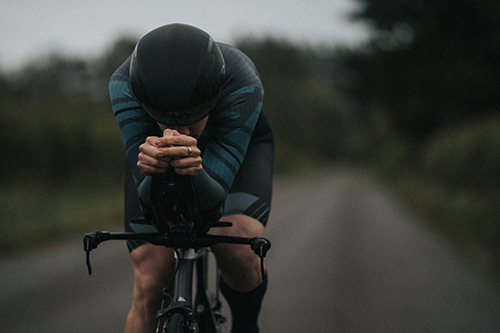
A cyclist. Image credit: Hale Dynamics
With the help of 3D technology and CFD modelling, a rider’s performance can be improved. We can break down the session into the following steps:
1. A specialist measures the client’s bike using a tape measure, digital angle gauge and levels. They also take a photo of the cyclist in the starting position.
2. The rider is scanned in the initial position with a Calibry 3D scanner.
3. Adjustments are made to the rider’s position based the rider’s on experience and feedback.
4. Measurements and photos are taken in a new position.
5. The rider is scanner in the new position.
6. Steps 3, 4, 5 are repeated several times. The number of iterations is based on how fast the preliminary optimal position is configured, as well as the time and cost of the session.
7. The client leaves with some initial feedback.
8. The specialist starts to post-process the scans and clean up the geometry, as needed. This is one of the most integral steps as the quality of the data determines the accuracy of the CFD analysis. Here decent geometry and cleaning are essential.
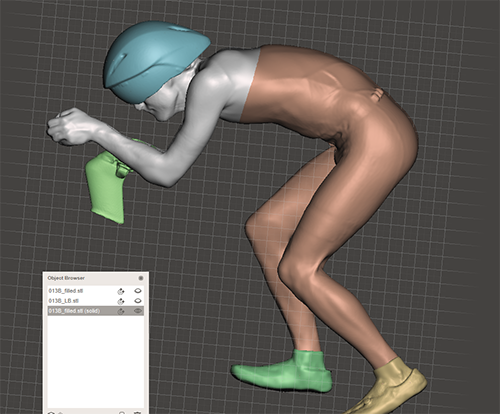
Geometry clean-up of the model. Image credit: Hale Dynamics
9. Now the specialist runs CFD calculations of each position to obtain a drag coefficient (CdA). The fluid dynamics modelling is run using OpenFOAM (open source software for computational fluid dynamics) with a tailor-made pipeline..
a) The first step is to create the mesh of the fluid domain. The hexahedral (six-sided cells) constructed mesh will represent a virtual wind tunnel (from the outside of the rider to the walls of the tunnel). To improve the effectiveness of the analysis, a hexahedral mesh is favored over a tetrahedral (pyramidal) mesh. This step requires good geometry because inverted cells and internal features could cause meshing problems.
b) Once the domain is meshed, fluid dynamics analysis can be run, typically taking anywhere from 10 minutes to several hours, depending on the complexity required.
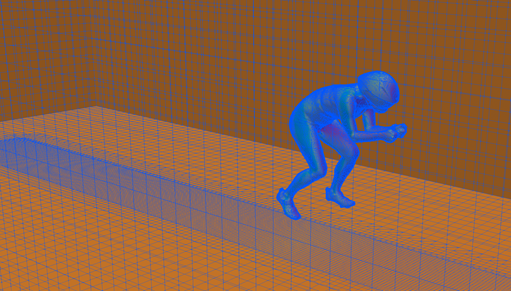
An example of a generated hexahedral mesh. Image credit: Hale Dynamics
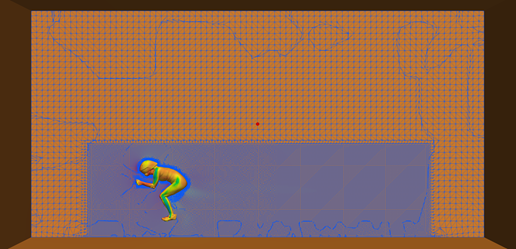
An example of a fluid domain. Image credit: Hale Dynamics
10. Lastly, the rider is provided with CFD output images and comparisons of projected speeds and equipment changes that would assist them in riding faster.
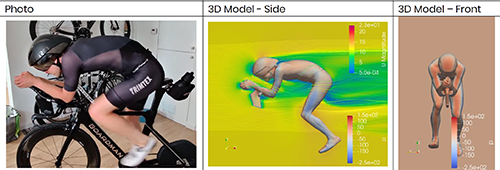
A sample of the report. Image credit: Hale Dynamics
Conclusion:
Around 80% of total aerodynamic drag is generated by an athlete. Using 3D technology, Hale Dynamics offers the riders precise and tailor-made analysis, which enables them to reduce the drag.
